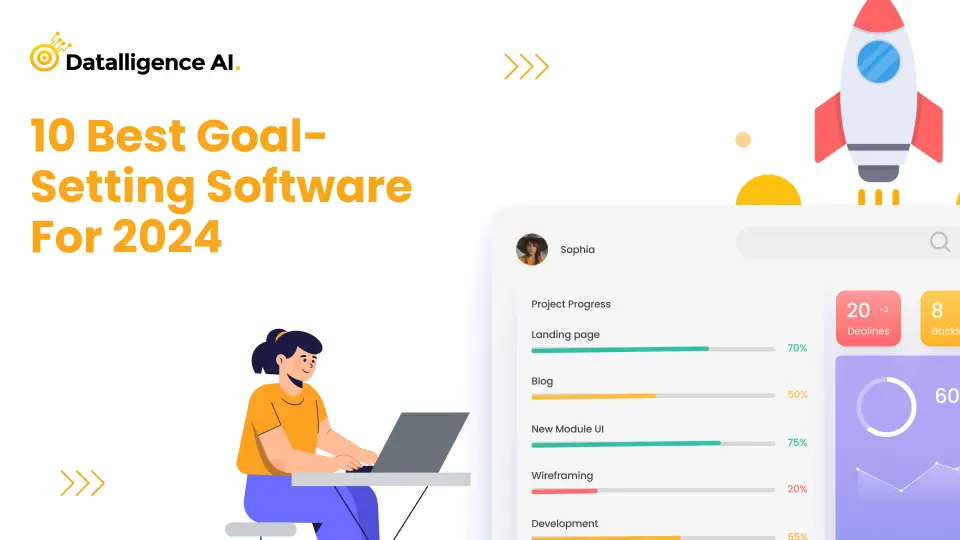Manufacturing industries are process-oriented and driven by high-quality standards. In manufacturing companies, the organization’s objectives are well defined and the key milestones (KPIs) are written to achieve individual targets, which carry different weightage and priorities. These KPIs are typically measured every month and are different for teams like supply chain, production, and quality.
In manufacturing companies, the business goals and KPIs work hand in hand. Few KPIs are required to understand the current benchmark to set the OKRs to achieve beyond what is capable today. Monthly or Quarterly planning will help to accomplish key targets.
To start with, we need to know the productivity rates and efficiency before setting the OKRs. Productivity is typically the number of units manufactured in a specific period. While measuring productivity. We can break it down into weeks and months to understand the core of it. This will help the team to forecast what is required to meet the demand or manage the delays. Since this is a highly competitive market, data is the key to review and planning.
How Does OKR Software Help the Manufacturing Industry?
It’s very important to align business priorities with the key metrics of all the departments. At a macro level, the Leadership team looks at productivity and efficiency. Objectives and Key Results (OKRs) help in aligning to the goal set by the management team. For example, Production plan Vs Actual helps in identifying productivity, and measuring OEE (Overall Equipment Effectiveness) is essential for measuring the overall plant efficiency. OKRs connect all the key metrics to deliver the organization’s priorities.

Effective Manufacturing OKRs?
Most of the manufacturing companies would have key milestones to follow for each process. Key Results are those metrics to know where you are travelling currently and with that visibility, you can create quarterly deliverables as Objectives, together called as OKRs. The OKRs collectively indicate your priorities for the next 90 days.
The OKRs for the manufacturing industry starts with an organizational goal, that gives way for measuring further departmental objective. For example, if the Profitability of a plant has to increase, the goal has to be set considering Raw materials, operational and infrastructure cost, with a clear indication of the department that will own such OKRs. Here are a few examples that can help
Example OKRs:
It is essential to start with OKRs that contribute directly to profitability. For example, Sales.
Only with the given sales forecast, the entire plant can plan for the delivery of the forecasted pipeline.
Objective 1: Increase the sales in the MENA region by 20 %
- KR 1: Acquire new customers to achieve the revenue target of 10%
- KR 2: Increase the sales from the existing customers by 10%
- KR 3: Decrease the churn by 3%
A Production department needs to operate on a very rigid timeline and adhere to the target that is agreed upon. When there is an Aspirational OKR set to increase profitability with also increases production capacity, leaders are driven to that specific goal. For example:
Objective 2: Increase the Production volume by 13 tons by Q3
- KR1: Decrease the Cycle time from 5 mins to 1 min
- KR2: Increase the production capacity by 2 lines
- KR3: Decrease in process rejections by 8%
The Quality Department should have aligned OKRs that are connected with the OKRs of the production department to achieve the set objective. If both Production and quality don’t work in tandem then achieving the aspirational goal will remain only an aspiration. For example:
Objective 3: Decrease the Quality Rejections by 2%
- KR 1: Bring down the plant PPM from 108 to 80
- KR 2: Customer rejection on the FG to be brought down to 5%
While Production and quality have their set objectives Procurement team will also be a major contributor to the profitability as it is the main cost centre of the plant. It is extremely important to control cost at the source. The OKRs has the power to curtail this cost for the department, for example
Objective 4: Achieve cost reduction of 10 %
- KR1: Decrease Raw material cost by 10% by identifying negotiation or alternate sourcing
- KR2: Reduce logistics cost by 5%
While the last but a cog in the wheel is the maintenance team who works along with the production team to ensure that the production team is equipped to deliver what it has promised. This team is very time-sensitive and works in increasing the OEE.
Objective 5: Implement and drive new strategies to ensure seamless maintenance.
- KR 1: Increase the MTBF(Mean Time Between Failures) by 1 hours by implementing condition-monitoring sensors to track machine health
- KR2: Decrease MTTR (Mean time taken to repair) by 25 minutes
- KR1: Ensure to test the front of the chassis to endure stress test
- KR2: Passenger airbag pressure optimization by 10%
- KR1: Increase the utilization from 80% to 90 %
- KR2: Decrease the throughput time by 3 minutes
- KR1: Complete the internal audit by May
- KR2: Ensure Zero NC in customer audits
- KR1: Increase the training hours by 8
- KR2: Launch the training application by May
- KR1: Ensure Zero accidents in the plant
- KR2: Increase the safety awareness to 100%










